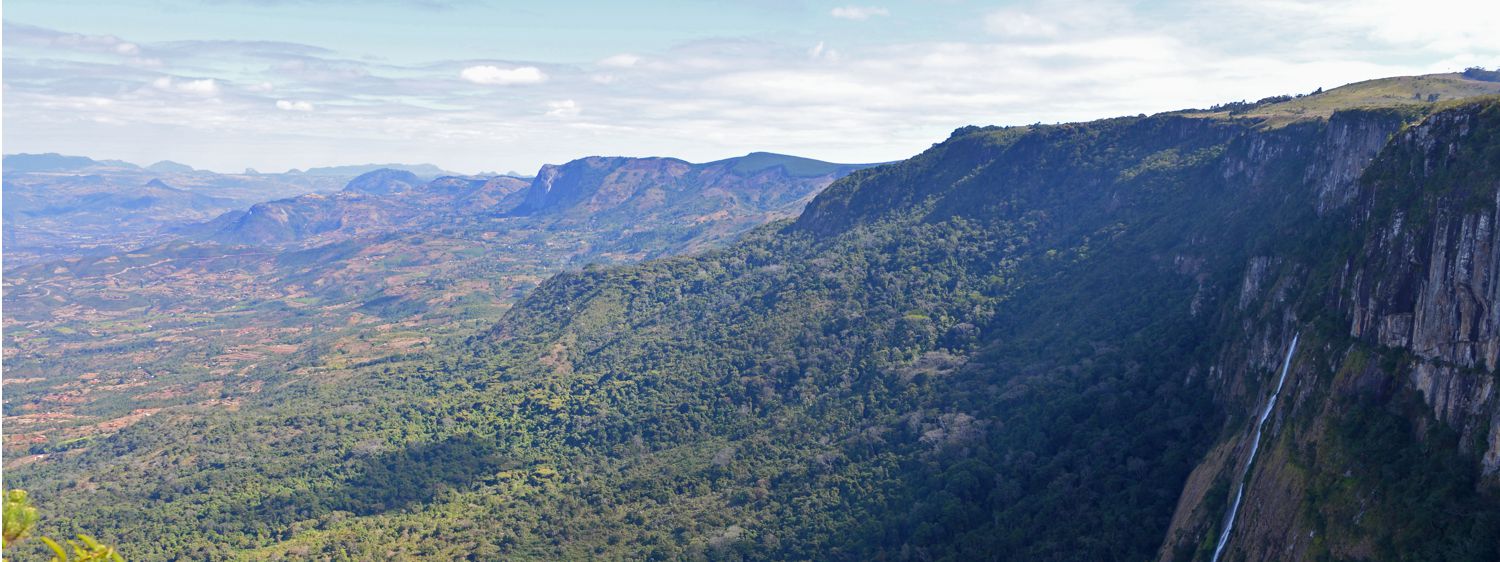The Eastern Highlands region in Zimbabwe is a breathtaking area known for its lush landscapes, cool climate, and diverse ecosystems. This region, which stretches along the eastern border of Zimbabwe, contrasts sharply with the rest of the country, which is predominantly characterized by savannas and dry plains.
The ecology of the Eastern Highlands is unique due to its higher altitude and greater rainfall. This results in a cooler and more temperate climate, which supports a variety of flora and fauna not found in other parts of Zimbabwe. The region is home to dense forests, rolling hills, and numerous waterfalls, creating a verdant and picturesque environment.
Geologically, the Eastern Highlands are part of the ancient mountain range known as the Eastern Arc Mountains. The area is characterized by its rugged terrain, with steep slopes and deep valleys. The mountains are composed mainly of granite and other metamorphic rocks, which have been shaped over millions of years by erosion and tectonic activity.
The nature and wildlife in the Eastern Highlands are incredibly diverse. The region is home to a variety of plant species, including indigenous hardwoods, ferns, and orchids. The forests are teeming with wildlife, such as antelope, monkeys, and numerous bird species. The cooler climate and abundant vegetation provide ideal conditions for these animals to thrive.
The Eastern Highlands also boast several national parks and protected areas that showcase the region's natural beauty and biodiversity. Nyanga National Park, located in the northern part of the highlands, is known for its stunning landscapes, including Mount Nyangani, the highest peak in Zimbabwe. The park is home to a variety of wildlife, including leopards, hyenas, and numerous bird species. Chimanimani National Park, located further south, is renowned for its rugged mountains, deep gorges, and spectacular waterfalls. The park is a haven for hikers and nature enthusiasts, offering numerous trails and breathtaking views. Another notable area is the Vumba Mountains, which are known for their lush forests, botanical gardens, and panoramic vistas.
At a glance
Why you should visit
The Eastern Highlands region is characterized by its rolling hills, lush forests, and stunning waterfalls, offering a serene escape from the hustle and bustle of everyday life. The Highlands are home to diverse flora and fauna, making it a paradise for nature lovers and bird watchers. The cool mountain climate provides a refreshing contrast to the warmer lowlands, making it an ideal destination for outdoor activities such as hiking, horseback riding, and fishing. The Eastern Highlands also boast unique cultural experiences, with charming villages and vibrant local markets that offer a glimpse into the traditional way of life. With fewer tourists compared to other popular destinations, the Eastern Highlands offer a peaceful and intimate connection with nature.
Our favourite time to visit
The best time to visit the Eastern Highlands is during the dry season, from May to October. During this period, the weather is cool and pleasant, making it perfect for outdoor activities and exploration. The clear skies and mild temperatures provide ideal conditions for hiking and enjoying the breathtaking landscapes. Whether you're an avid adventurer, a nature enthusiast, or someone seeking a tranquil retreat, the Eastern Highlands promise an unforgettable experience filled with natural beauty and cultural richness.



